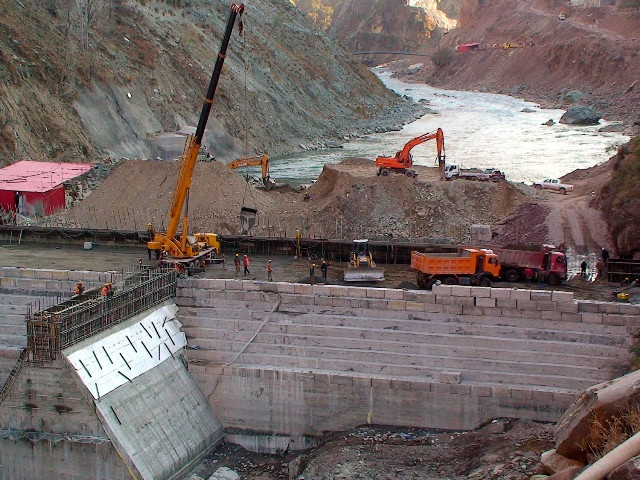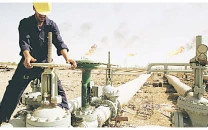Neelum-Jhelum project on schedule, says WAPDA
Officials claim the plant is a top priority for the government.

Out of a total 67 kilometres of tunnels, over 33 kilometres have been excavated, while excavation of the under-ground powerhouse stands at over 70% and the transformers hall at 95%. PHOTO: FILE
Officials told the press that the project, besides generating much-needed hydel electricity in the country, is also of immense importance for establishing priority water rights.
Expressing satisfaction over the pace of work, officials said that the project is an excellent opportunity for socio-economic uplift of the local populace by providing them job opportunities and boosting other economic activities in the area.
Sources said that two tunnel-boring machines (TBMs) were also imported from Germany to complete the project in time, saying that these machines have already been made functional on the project.
Out of a total 67 kilometres of tunnels, over 33 kilometres have been excavated, while excavation of the under-ground powerhouse stands at over 70% and the transformers hall at 95%.
The powerhouse will be located in Chattar Kalass, 22 kilometres south of Muzaffarabad. Installed capacity of the project is 969MW, divided into four units of 240MW each.
The original cost of the project was Rs130 billion but the revised cost of the project was put at Rs274.882 billion because of a change in design, and diversion of machinery to help during the 2005 earthquake.
The Neelum Jehlum Hydro electric Project envisages the diversion of water from the Neelum river through a tunnel, to the plant, and then back out into the Jehlum river.
The government is paying special attention to the development of infrastructure projects in the country, allocating of Rs1.1trillion in the Public Sector Project Programme (PSDP) for fiscal year 2013-14.
The Neelum-Jhelum Hydropower Project, on completion, will contribute 5.15 billion units of low-cost electricity to the national grid every year, said the officials.
Annual benefits of the project have been estimated at about Rs 45 billion.
Published in The Express Tribune, September 3rd, 2013.
Like Business on Facebook, follow @TribuneBiz on Twitter to stay informed and join in the conversation.



















COMMENTS
Comments are moderated and generally will be posted if they are on-topic and not abusive.
For more information, please see our Comments FAQ